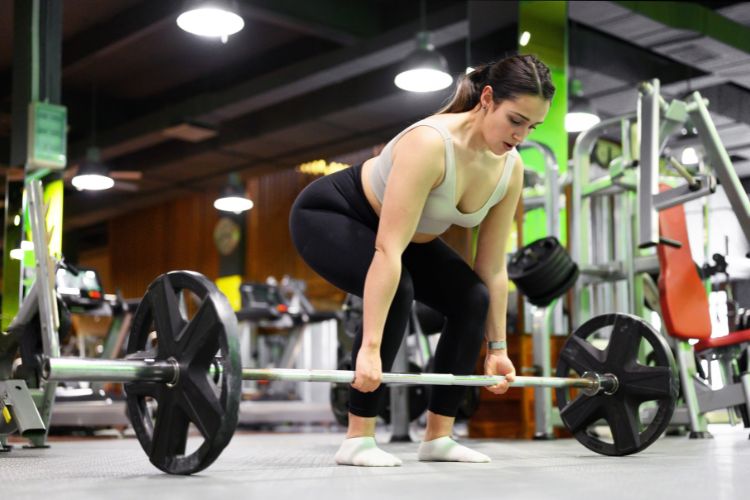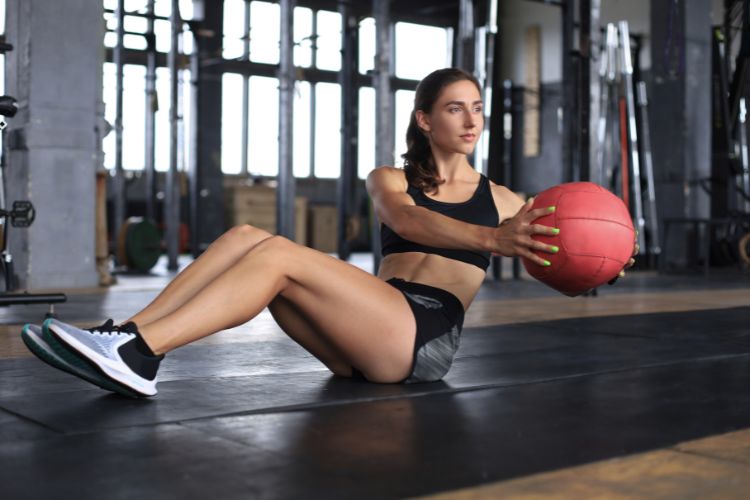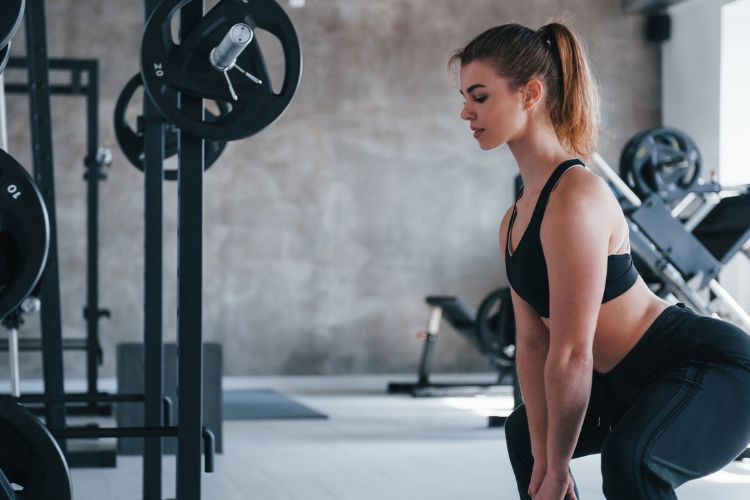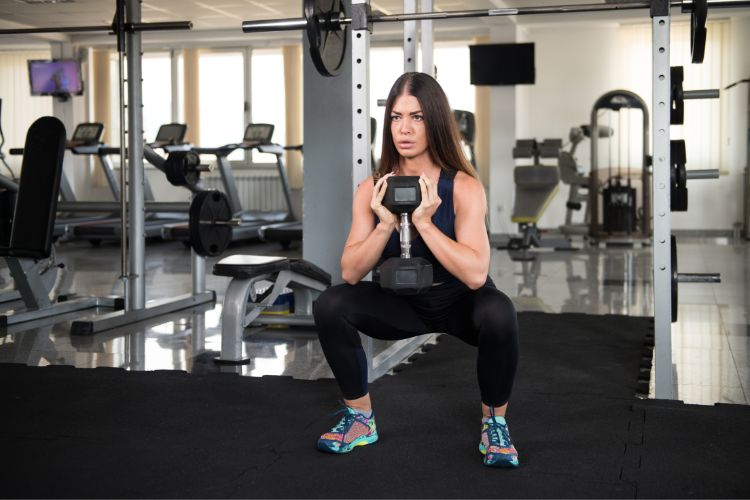Sign up for workout ideas, training advice, reviews of the latest gear and more.






When it comes to building strength, toning muscles, and boosting overall fitness, dumbbell squats are a powerhouse exercise that every woman should consider adding to her workout routine. Not only do they target multiple muscle groups, but they also improve balance, coordination, and functional strength. Whether you’re a beginner or a seasoned fitness enthusiast, dumbbell squats can be tailored to suit your fitness level and goals. In this comprehensive guide, we’ll dive deep into the benefits, techniques, and variations of dumbbell squats, along with tips to optimize your workouts for maximum results.
Dumbbell squats are a compound exercise, meaning they engage multiple muscle groups simultaneously. Primarily, they target the quadriceps, hamstrings, glutes, and calves, but they also work your core, back, and shoulders as stabilizers. This makes them an efficient way to build strength and burn calories in less time.
Squats are known for their ability to increase muscle mass, which in turn boosts your metabolism. A higher metabolic rate means you’ll burn more calories even at rest, making dumbbell squats an excellent addition to any weight loss or body-toning program.
Squats mimic everyday movements like sitting, standing, and lifting, making them a functional exercise that enhances your ability to perform daily activities with ease. For women, this is particularly beneficial as it can help prevent injuries and improve overall mobility.
Weight-bearing exercises like dumbbell squats are crucial for maintaining bone density, especially for women who are at a higher risk of osteoporosis. Regularly performing squats can help strengthen bones and reduce the risk of fractures as you age.
There’s something incredibly empowering about lifting weights and feeling strong. Dumbbell squats not only transform your body but also boost your confidence, proving that you’re capable of achieving your fitness goals.
Before diving into advanced variations, it’s essential to master the basic dumbbell squat. Proper form is crucial to prevent injuries and ensure you’re targeting the right muscles.
Once you’ve mastered the basic dumbbell squat, it’s time to spice things up with variations that target different muscle groups and add variety to your workouts.
The goblet squat is an excellent variation for beginners as it helps improve squat depth and form.
How to Do It:
Benefits:
This variation targets the inner thighs and glutes more intensely.
How to Do It:
Benefits:
This unilateral exercise helps correct muscle imbalances and targets each leg individually.
How to Do It:
Benefits:
This advanced variation challenges your core, shoulders, and upper back.
How to Do It:
Benefits:
Add a pulse at the bottom of your squat to increase time under tension and burn out your muscles.
How to Do It:
Benefits:
To maximize the benefits of dumbbell squats, it’s essential to incorporate them strategically into your workout routine. Here are some tips to help you get started:
Before diving into squats, spend 5-10 minutes warming up with dynamic stretches or light cardio to prepare your muscles and joints.
If you’re new to squats, begin with bodyweight squats to master the form before adding weights.
Start with lighter dumbbells and gradually increase the weight as you build strength and confidence.
Incorporate different squat variations to keep your workouts interesting and target various muscle groups.
Combine dumbbell squats with other lower-body exercises like lunges, deadlifts, and step-ups for a well-rounded leg workout.
Allow at least 48 hours of rest between lower-body strength training sessions to give your muscles time to recover and grow.
Even with proper guidance, it’s easy to make mistakes when performing dumbbell squats. Here are some common pitfalls to watch out for:
This can put unnecessary strain on your knees. Focus on pushing your knees outward as you lower into the squat.
Keep your chest up and your spine neutral to avoid putting pressure on your lower back.
Your weight should be evenly distributed across your feet, with a slight emphasis on your heels.
Perform each rep with control to maximize muscle engagement and reduce the risk of injury.
Start with a weight that allows you to maintain proper form. Gradually increase the weight as you get stronger.
To get the most out of your dumbbell squat workouts, consider these additional tips:
Concentrate on the muscles you’re working during each rep to ensure maximum engagement.
Add explosive movements like jump squats to increase power and cardiovascular endurance.
Keep a workout journal to track your weights, reps, and sets. This will help you stay motivated and see your progress over time.
Consistency is key to seeing results. Aim to perform dumbbell squats 2-3 times per week as part of a balanced fitness routine.
Proper nutrition is essential for muscle recovery and growth. Ensure you’re consuming enough protein, healthy fats, and carbohydrates to support your workouts.
Dumbbell squats are a versatile and effective exercise that can transform your body, boost your confidence, and enhance your overall fitness. By incorporating these workouts into your routine, you’ll not only build strength and tone your muscles but also improve your functional fitness and bone health. Remember to start with proper form, progress gradually, and mix up your workouts to keep things exciting. With consistency and dedication, you’ll soon reap the incredible benefits of dumbbell squats and feel stronger, more empowered, and ready to take on any challenge. So grab those dumbbells, squat your way to success, and embrace the journey to a stronger, healthier you!
Stay up to date on the latest women’s health, fitness and lifestyle trends and tips.